This week the House of Ideas travels to an alternate universe to look at what could have been for Marvel’s first family in Fantastic Four: Life Story! Does the debut issue of the series live up to the anticipation? Then, Shang-Chi returns in a new ongoing series, and his first foe is the entire Marvel Universe!
We’ve got reviews of Fantastic Four: Life Story #1 and Shang-Chi #1, as well as a Rapid Rundown of other new Marvel titles for the week, all ahead in the latest installment of The Marvel Rundown!
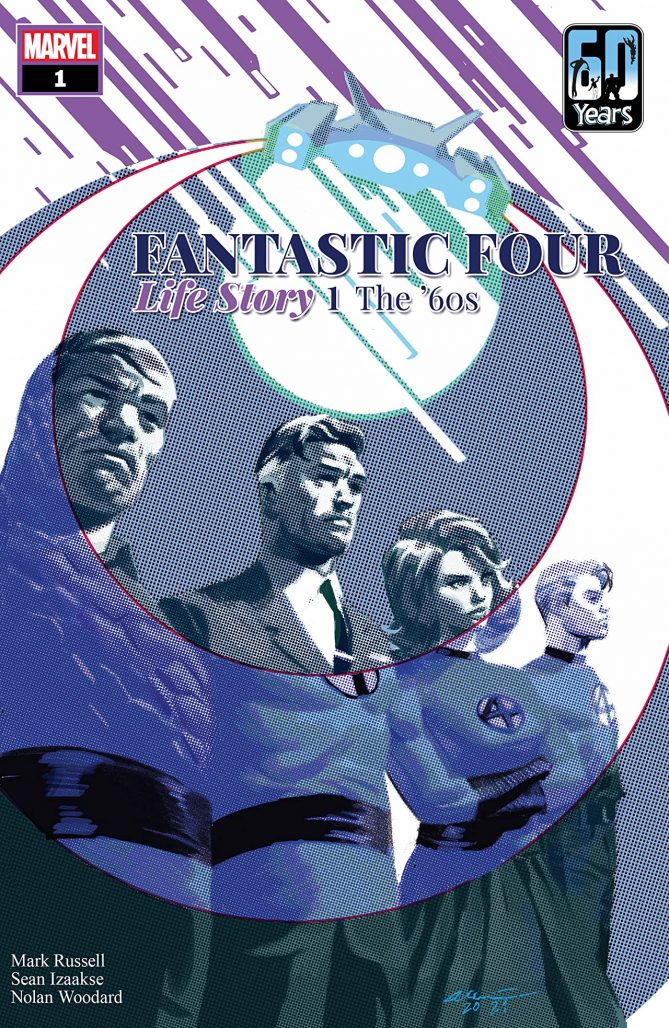
Fantastic Four: Life Story #1
Writer: Mark Russell
Artist: Sean Izaakse
Color Artist: Nolan Woodard
Letterer: VC’s Joe Caramagna
Cover Artist: Daniel Acuña
The Fantastic Four are celebrating their sixtieth anniversary this year, and what better way to commemorate the occasion than with a series that spans the entire history of the team. Like Spider-Man: Life Story before it, Fantastic Four: Life Story reimagines the events of the titular team’s sixty years against a backdrop of the current events amid which those stories were published. The first issue of the series presents the group’s origin story, recontextualized against the political and social background of the ‘60s, and it does so to great effect.
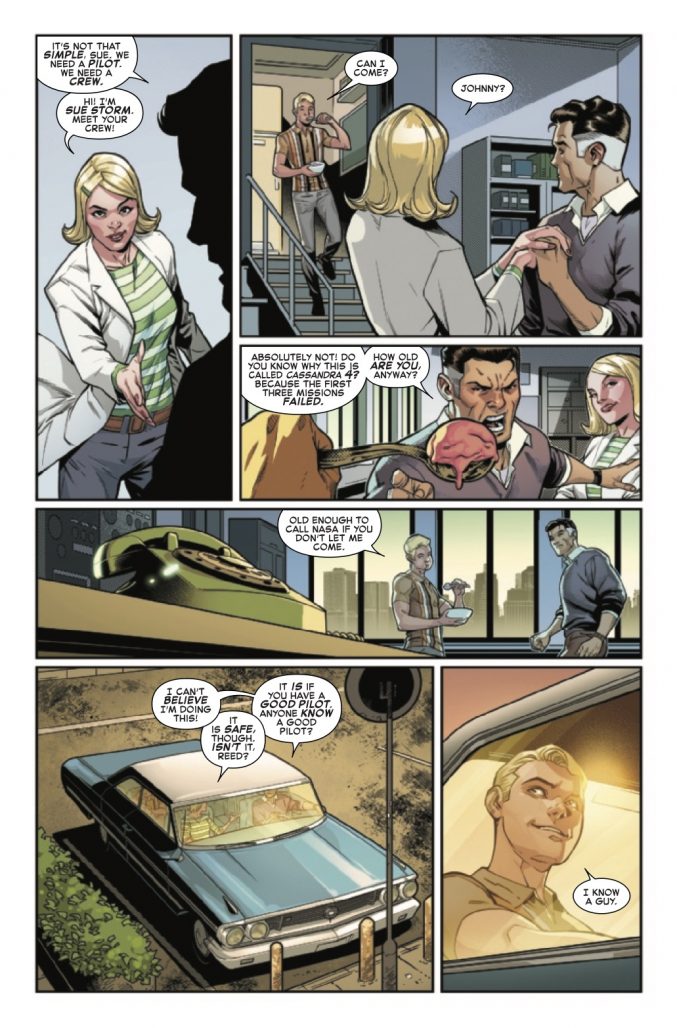
With his work on The Snagglepuss Chronicles, writer Mark Russell proved himself to be more than capable of using established characters to examine past eras through a new lens, and from the jump it’s clear he’ll be using Fantastic Four: Life Story to do something similar. Russell ties the FF’s origin story to the space race between the United States and the Soviet Union, adding an interesting new layer of depth to the familiar events of the first FF tale.
Beyond the origin story, Russell captures the angst of those early Fantastic Four stories beautifully, and weaves in historical elements like the FF attending JFK’s funeral and Sue Storm taking part in a civil rights march among the more traditional superhero action. If anything, I would have liked to see more of the social issues of the ‘60s addressed through the team – it’s easy to imagine Johnny getting involved in protest along with his big sister, or heading down a different path altogether. Perhaps that will come into play more fully as the series progresses.
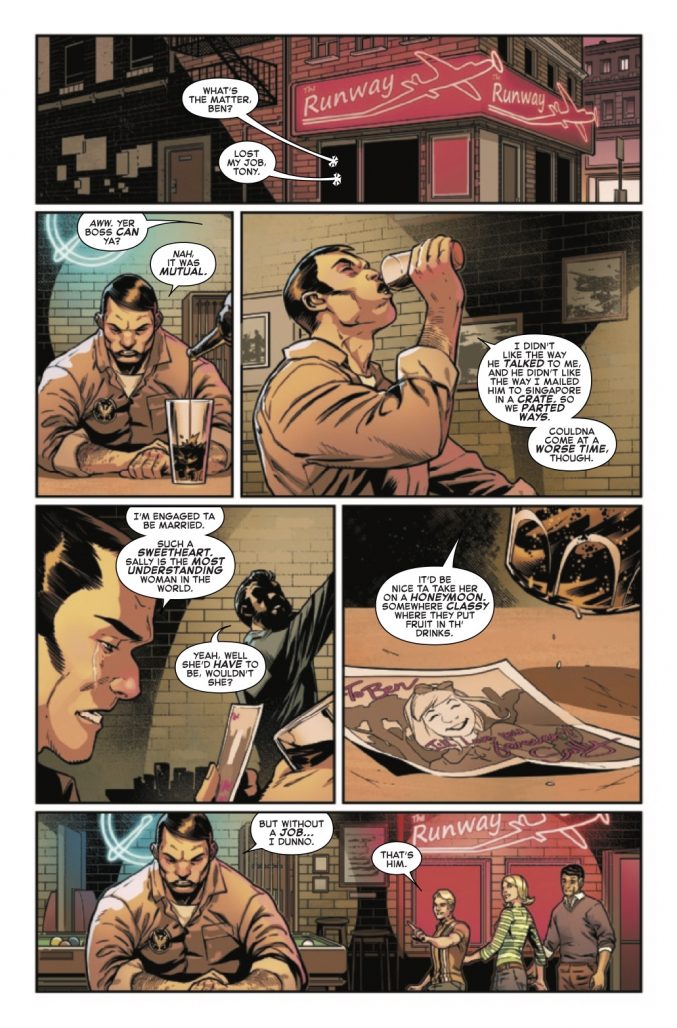
Whether it’s montages of the quieter or less action-packed moments or big scenes of cosmic catastrophe, artists Sean Izaakse and Nolan Woodard capture the energy and emotion of events wonderfully. Izaakse is an artist whose work I haven’t seen much of before, but his work on this issue has me interested to see more of it, and Woodard’s colors complement Izaakse’s linework well and go a long way towards the success of the storytelling. This is a great-looking book, without question.
In all, Fantastic Four: Life Story #1 is an exceptionally strong start for this series. Russell’s writing on the issue is top-notch, and Izaakse and Woodard are more than up to the task of both the cosmic adventure and the smaller character work. I look forward to seeing how this team works in more of the real-world historical elements as the series continues. Even without those, though, as an alternate take on Marvel’s first family, this book is already a compelling and fascinating read.
Final Verdict: Buy.
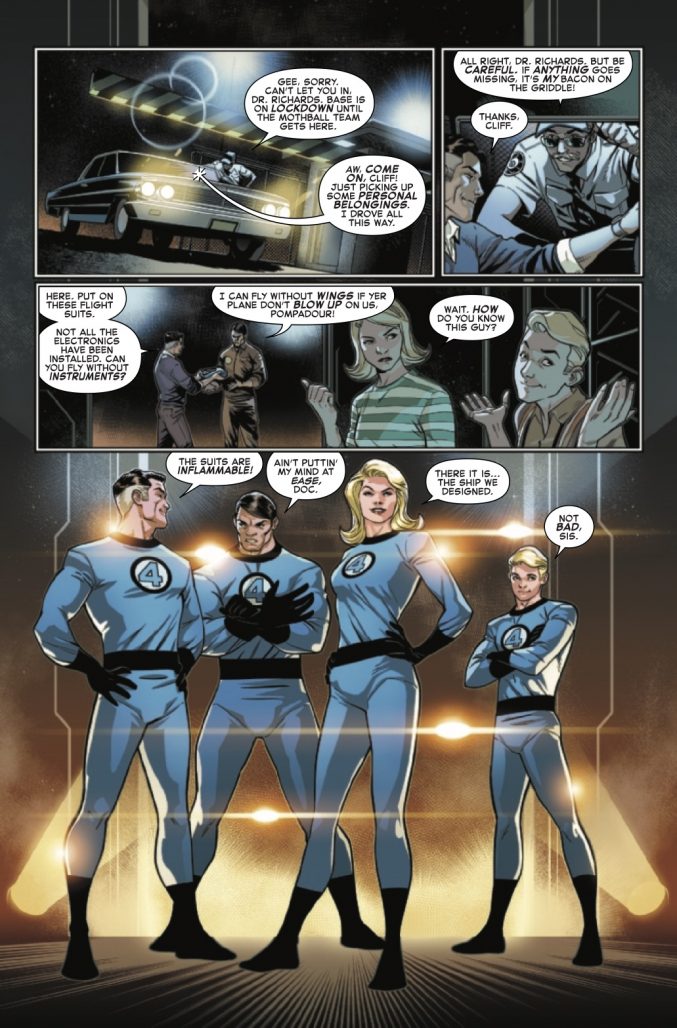
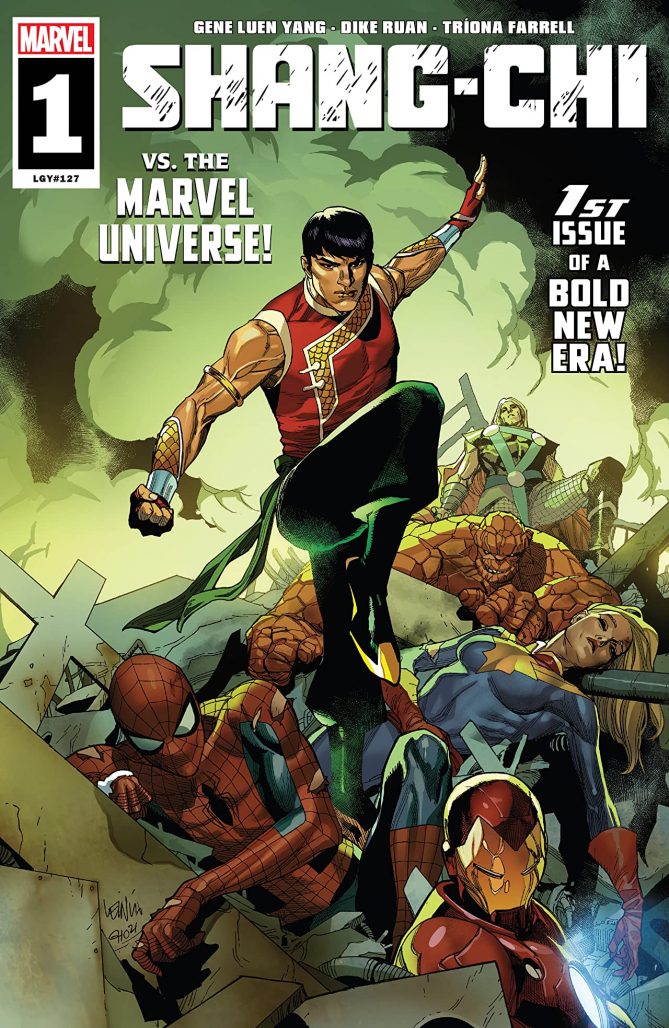
Shang-Chi #1
Writer: Gene Luen Yang
Artist: Dike Ruan
Color Artist: Triona Farrell
Letterer: VC’s Travis Lanham
Cover Artists: Leinil Francis Yu & Sunny Gho
Shang-Chi is set to have the biggest year ever for the character, with a successful five-issue miniseries having wrapped in January and a hotly-anticipated big-screen adaptation coming to the Marvel Cinematic Universe in September. Add ‘a new ongoing series’ to the list of milestones, as this week kicks off the series from the miniseries creative team of Gene Luen Yang, Dike Ruan, and Travis Lanham, now joined by colorist Triona Farrell. The debut of the series is a wildly enjoyable issue that portends great things for the title.
Gene Luen Yang is currently doing spectacular work on Batman/Superman for the Distinguished Competition, and it’s no surprise that his work on this book is just as great. I have to admit that I didn’t catch the previous five-issue mini that Yang wrote, and that is an error I will be correcting as soon as I can. Even still, Yang does a clean job of setting up Shang-Chi’s current status quo quickly and clearly before getting into the meat of the issue. The collision of Shang-Chi’s superhero world with his newly-inherited leadership of the Five Weapons Society plays out beautifully, and the interactions between Shang-Chi, his sister Esme, and Spider-Man are a joy to read. The subtext of those scenes is clear without being blatantly obvious, and the reader gets a real sense of the weight of the decision Shang makes at issue’s end.
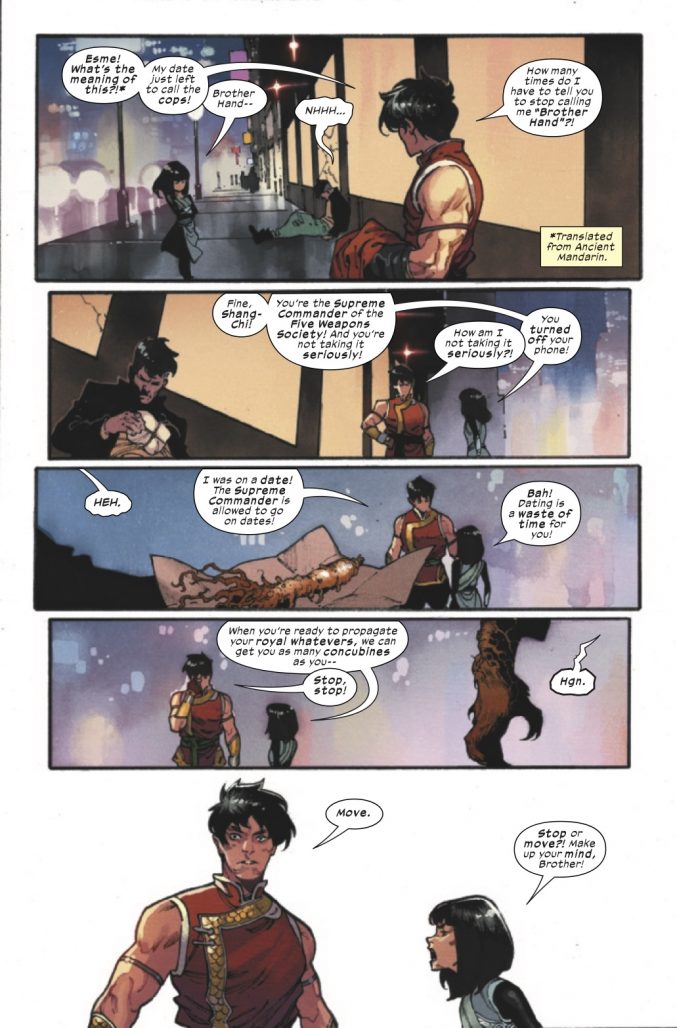
Artist Dike Ruan’s work falls pretty firmly within Marvel’s unofficial house style, which works well to ground the story visually within the Marvel Universe. His linework isn’t overly busy, and his characters move smoothly without appearing static. Triona Farrell’s colors work well in conjunction with Ruan’s linework, blending well with the heavy black shadows of a story largely set at night and in dark locales. The brighter colors of the opening dinner sequence contrast nicely with what follows, visually distinguishing the two sides of Shang-Chi’s life well.
Shang-Chi #1 is a good, good comic. It’s easily accessible for readers who may not be familiar with the character’s history, and the quality writing and artwork are enough to grab you and make you want to learn more. Marvel has already displayed their faith in this team by upgrading what was originally a miniseries to an ongoing series. Reading the first issue of the series, it’s easy to see their faith was well-placed.
Final Verdict: Buy.
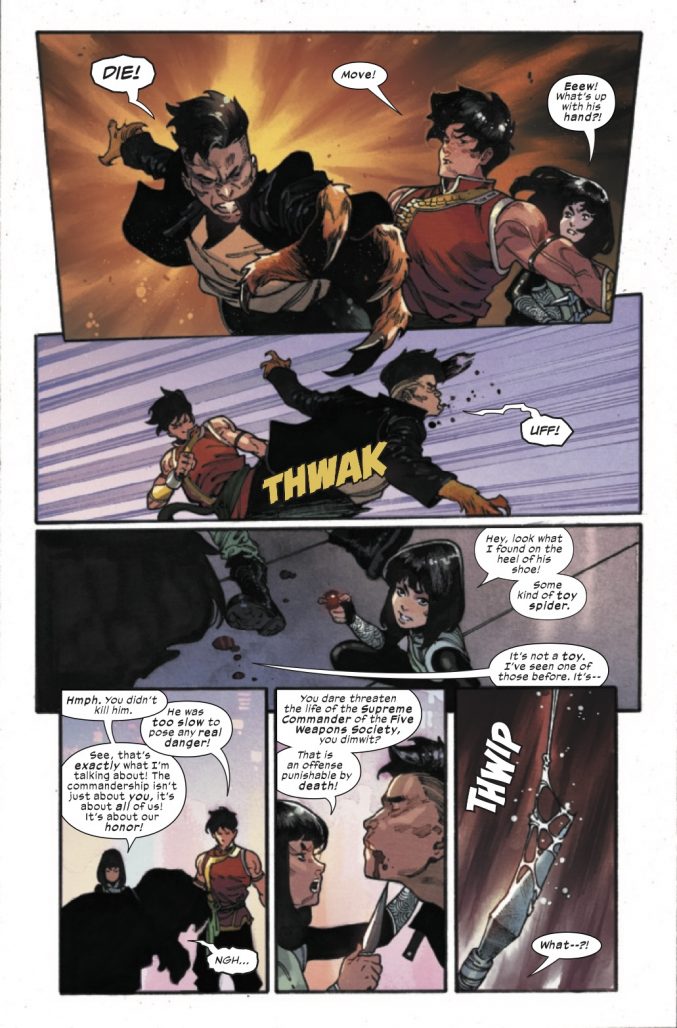
Rapid Rundown!
- Heroes Reborn #3
- I get why publishers do events – they can be a nice bump in sales for the company. Literally having no time coming out of King in Black, I was not looking forward to another event, and I wanted to hate this event, but so far I can’t. Writer Jason Aaron has found a way to put a spin on the alternate timeline trope, and this issue might make my list of top ten speedster stories. For the main story, Aaron and artist Federico Vicentini use a frenetic funhouse mirror to craft a high-octane battle race for the Squadron’s resident speedster Blur that does an amazing job of also showing us more of this Avenger-less world. And to keep the overall event moving, artist Ed McGuinness pencils everyone’s favorite vampire killer, Blade, as he works to reassemble the Avengers of his reality. —GC3
- Immortal Hulk: Time of Monsters #1
- I’m a fan of these series of one-shots that explore the Hulk mythology through the twisted lens of the ongoing series, and this may have been the best of the bunch. Alex Paknadel, Al Ewing, Juan Ferreyra, and Cory Petit craft this really special and genuinely disturbing glimpse into how disturbing and desperate humanity can be, and how one can lose themselves when faced with this desperation. Ferreyra’s painted style evokes a kind of forgotten or mythological story which contrasts surprisingly with the series’ trademark body horror scenes, and Paknadel’s scripting just proves yet again that he is one of comics’ most exciting writers. —HW
Next week, Ta-Nehisi Coates‘s landmark Black Panther run reaches its epic conclusion!


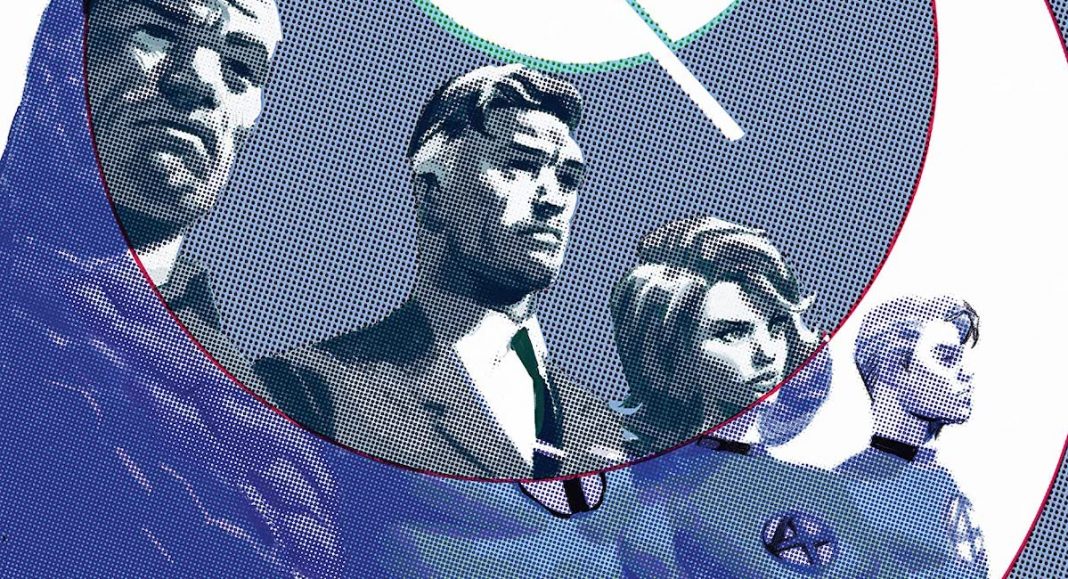
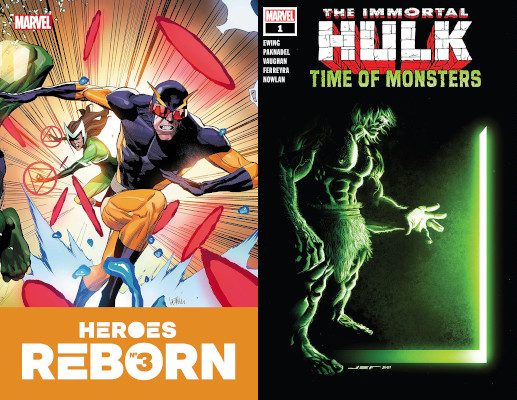


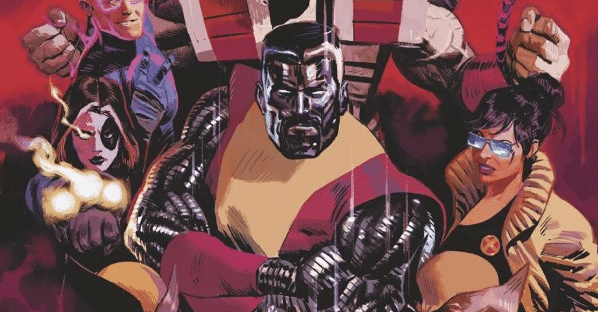



Zzzzzzzzzzzzzzzzzzzzzzzzzzzzzzzzzzzzzz
Wasn’t that FF plot already done in ‘Unstable Molecules’? There is literally no new idea at Marvel. The ‘original’ Hulk they’ve been touting- a prehistoric version- was literally done in both the Bill Bixby television series and the 1980s Animated Hulk series. Yawn.
Comments are closed.